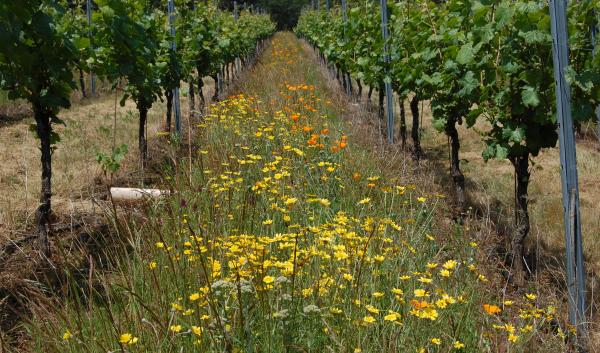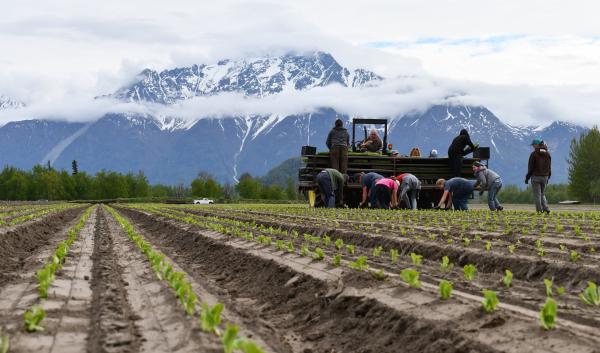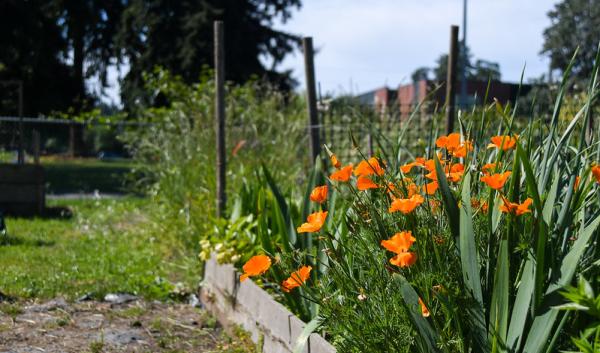Estimated reading time: 7 minutes
Key points:
- The geographic diversity supports diverse and highly productive agriculture that creates thousands of jobs and contributes billions of dollars to each state’s economy.
- Climate change will impact agriculture, most notably by increasing temperatures which will decrease plant productivity, lengthen the growing season, and create more favorable conditions for pests.
- The timing, amount and form of precipitation will change with climate change, which will affect streamflow patterns and availability of water for irrigation.
- Many of these changes are already happening, and some have caused economic losses, but there are many adaptation options that can reduce the impacts of climate change.
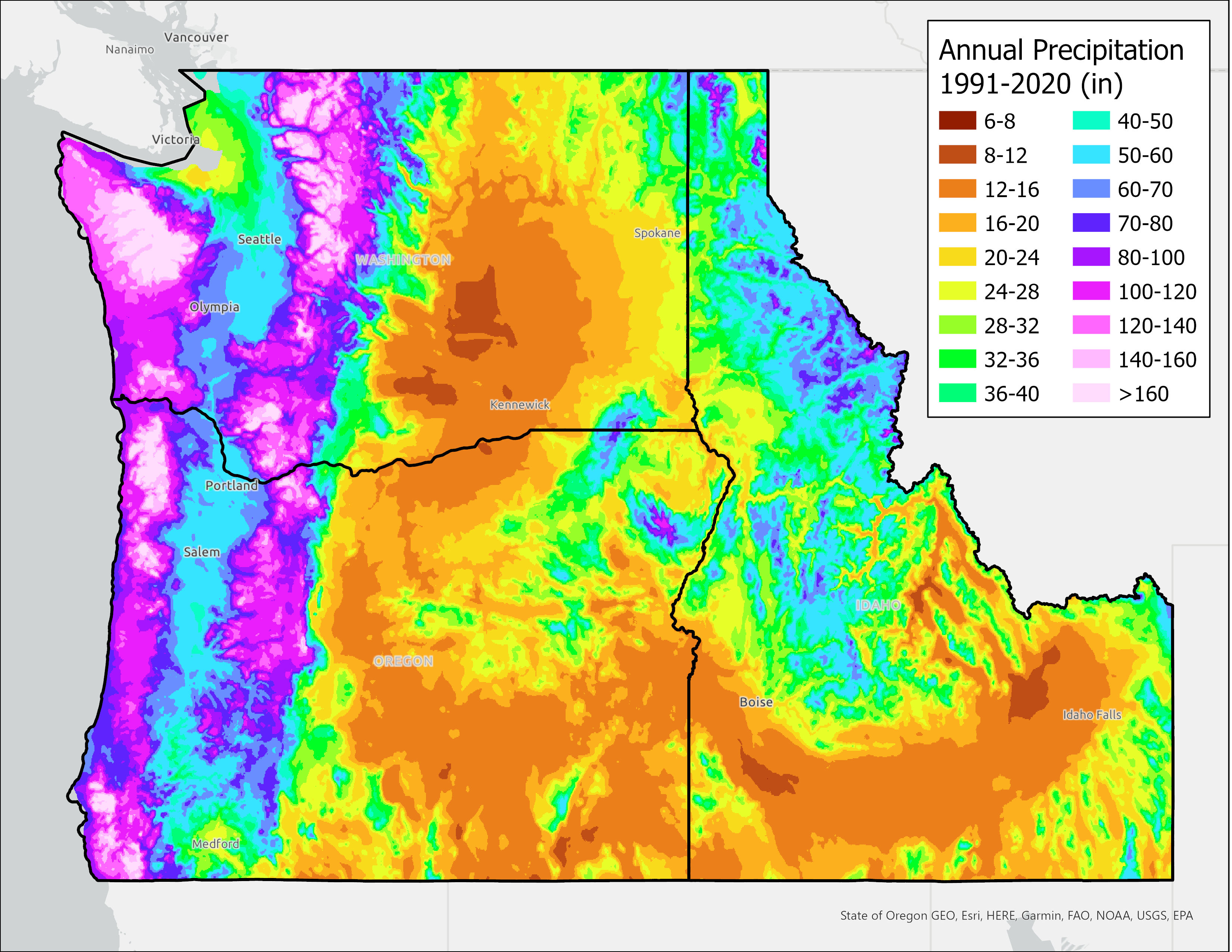
The Northwestern United States is characterized by tall, snowy, mountains and large, cool rivers. The area west of the Cascade Mountains has a maritime climate with mild seasonal temperatures and wet winters. East of the Cascades, the climate is drier, with colder winters and hotter summers. The region’s tall mountains collect most of the winter precipitation as snow, releasing it later in the year as temperatures rise and snow melts. Diverse climates in the region allow for a diversity of agricultural products. In addition, the coastline provides habitat for fish and shellfish, making aquaculture in this region plentiful. Agriculture in the Northwest differs from agriculture in Alaska, and this article focused on Idaho, Oregon, and Washington only.
Northwest Crops
Although many crops are grown across the entire region, there are different specialty crops on the east and west side of the Cascade Mountains owing to different climates, the availability of irrigation in some areas, and a large range of soil types. East of the Cascade Mountains, irrigated crops include potatoes, vegetables, and tree fruits, while dryland crops include wheat, barley, and legumes. In the region to the west of the Cascade Mountains, higher precipitation and typically clay-rich and acidic soils support more hay and specialty crops, such as hops, cranberries, blueberries, and hazelnuts. Overall, the Northwest produces a wide variety of crops and agricultural commodities, with over 300 grown in Washington, more than 250 grown in Oregon, and over 185 grown in Idaho. The Northwest is a highly productive agricultural region, and states in the region are the top producers of several crops, including:
- Barley and potatoes in Idaho.
- Apples, wheat, hops, pears, blueberries, and cherries in Washington.
- Hazelnuts, Christmas trees and “caneberries” (blackberries, raspberries, marionberries, and boysenberries) in Oregon.
The diversity and productivity in the Northwest make agriculture an important part of the livelihoods of rural, urban, and tribal communities. The agriculture industry creates nearly 300,000 jobs and generated $13.8 billion in sales in 2017, making up more than 13% of each state’s economic activity.
The Future of Agriculture in the Northwest
Climate change will have varying impacts on agriculture. There are three main effects of climate change that will be relevant to agriculture in the Northwest:
- Temperatures will increase.
- Precipitation timing, amount, and form (rain versus snow) will change.
- The concentration of carbon dioxide in the atmosphere will be higher in the future and may affect crop productivity.
There is strong agreement among global climate models that temperatures in all seasons will increase in the Northwest, increasing the length of the growing season. Climate models project a slight increase in average annual precipitation, but the projections for precipitation are much more uncertain than those for temperature. However, there is high certainty that with higher temperatures, more precipitation will fall as rain rather than snow. Historically, as much as 37% of precipitation in the western United States has fallen as snow, generating as much as 75% of water supplies in parts of the region. Warmer temperatures and less snow will lead to changes in streamflow and reduced availability of water in the summer. Global climate models also indicate that there will be more extreme rainfall events in the future, with longer periods of time between rain events. Increased temperatures and longer periods of time between rainfall events will result in reduced soil moisture and drought stress in crops.
Changes in the atmospheric concentration of carbon dioxide may also affect plant productivity. In general, increased concentration of carbon dioxide increases water efficiency in plants and can increase growth. However, drought and limited availability of other nutrients may constrain increases in plant productivity with climate change.
What does this all mean for agriculture in the Northwest?
To understand how plants are affected by temperature alone, it is important to know that plants have upper and lower temperature thresholds, as well as an optimal growth temperature. When temperature drops below this threshold, plant germination, growth, and development is impacted. When temperature exceeds this threshold, plants become less productive – sometimes dropping blossoms or producing smaller fruits. Our current agricultural systems are adapted to these temperature limits, and farmers that live in this region know how to best grow crops that have historically grown well in this region. Unfortunately though, the plants that grow best in this region may be changing. With climate change, plant hardiness zones will shift northward. Hardiness zones reflect the average lowest temperature in an area. Although plants can be planted in warmer environments than their ideal hardiness zone, this shift could make plants that are adapted to colder weather less productive. This may create economic impacts on producers and distributors who have started farms or businesses built for certain crops. Flowering time of plants may be affected by increases in temperature. Although plants are responsive to day length as an indicator of spring, they are also sensitive to increases in temperatures. For plants that have an over-winter chilling requirement, such as apples and other temperate fruits, wintertime temperature increases may cause later flowering. These temperate fruits are important to the region, and if their over-winter chilling requirements are not met, they could become less productive overall. Later budbreak also means less time until harvest, which could lead to smaller fruit. Increases in temperature may also lead to changes to apple flavor and texture. Other plants may respond to increased temperatures during the growing season by flowering earlier in the year. As temperatures increase earlier in the year, flowers may bloom before the last frost in a type of false spring, which could damage fruit buds. Changes in the timing of plant flowering may also result in mismatches between pollinators and the plants they pollinate, especially if the two adjust to climate change at different rates. The longer growing season caused by temperature increases may lead to other challenges for pollinators. Plants will not produce more flowers with a longer growing season, meaning here will be the same number of flowers spread across a longer period of time, which could lead to increased competition for pollinators. This could mean not enough food availability and cause decreases in their populations. Lastly, increased temperature is likely to lead to more competition from weeds and better conditions for some pests and pathogens. These changes will pose challenges to agricultural systems in the future. Climate change impacts on water resources may also affect agriculture in the Northwest. Increasing temperatures and changes in precipitation patterns will affect stream flows and the availability of water for irrigation. More intense rainstorms could lead to flooding in low-lying areas, and more severe drought will lead to drought stress in plants and limit productivity. Although increased temperature and changes in precipitation will likely have some negative impacts on plant growth, flowering, and productivity, longer growing seasons and increased atmospheric carbon dioxide concentrations may have some positive effects on plant growth. Increased carbon dioxide also makes plants more water efficient, meaning that changes to water availability may not have negative effects on some crops. For example, winter wheat productivity is expected to increase with climate change. In the inland Northwest, winter wheat is expected to use less water in general, and spring wheat even less, which may make decreases in water availability less of a concern for wheat farmers. However, increased drought stress in other crops may outweigh any positive effects of increased carbon dioxide concentrations on crop productivity. In addition, studies have shown decreases in the nutritional value of crops grown in higher carbon dioxide environments. Legumes show decreases in zinc and iron, and other plants like wheat show decreases in protein levels when grown in higher carbon dioxide environments. In the future, it will be crucial for producers to know how these climate change effects will impact the crops they grow and for consumers to know how the food they eat may change, both in availability and nutritional value. This will help producers and consumers know what actions they can take to be prepared for future changes. How have farmers already been impacted by climate change? It is hard to predict how extreme weather events such as droughts and floods may impact farmers in the future, but the economic losses from recent droughts may provide some insight. As the climate has changed over the last several decades, farmers have struggled for a number of reasons, and many have already been impacted by climate change. To offset losses in farm income, farmers across the United States have had to seek employment off the farm, and a number of young people have turned away from the profession altogether. This loss is more than just economic, as many farms have been in families for generations. Farmers who are displaced lose their history, and this can lead to feelings of despair and hopelessness. Many farmers struggle as a result, and so does their mental health. What can farmers do to prepare for climate change? Fortunately, there are ways that farmers can prepare for climate change, with a number of adaptation options and programs available. Many farmers have begun focusing more on soil health to help plants survive during extreme weather events. Simple practices such as using cover crops, low- or no-till farming, and adding biochar to soil can help soils hold more water and replenish nutrients that crops will need. For drought, farmers can implement practices that make irrigation more efficient, choose drought-resistant crops, practice crop rotation, and add in livestock to their operations to increase organic matter and soil health. There is hope that farmers will be able minimize many of the negative effects of climate change through adaptation. 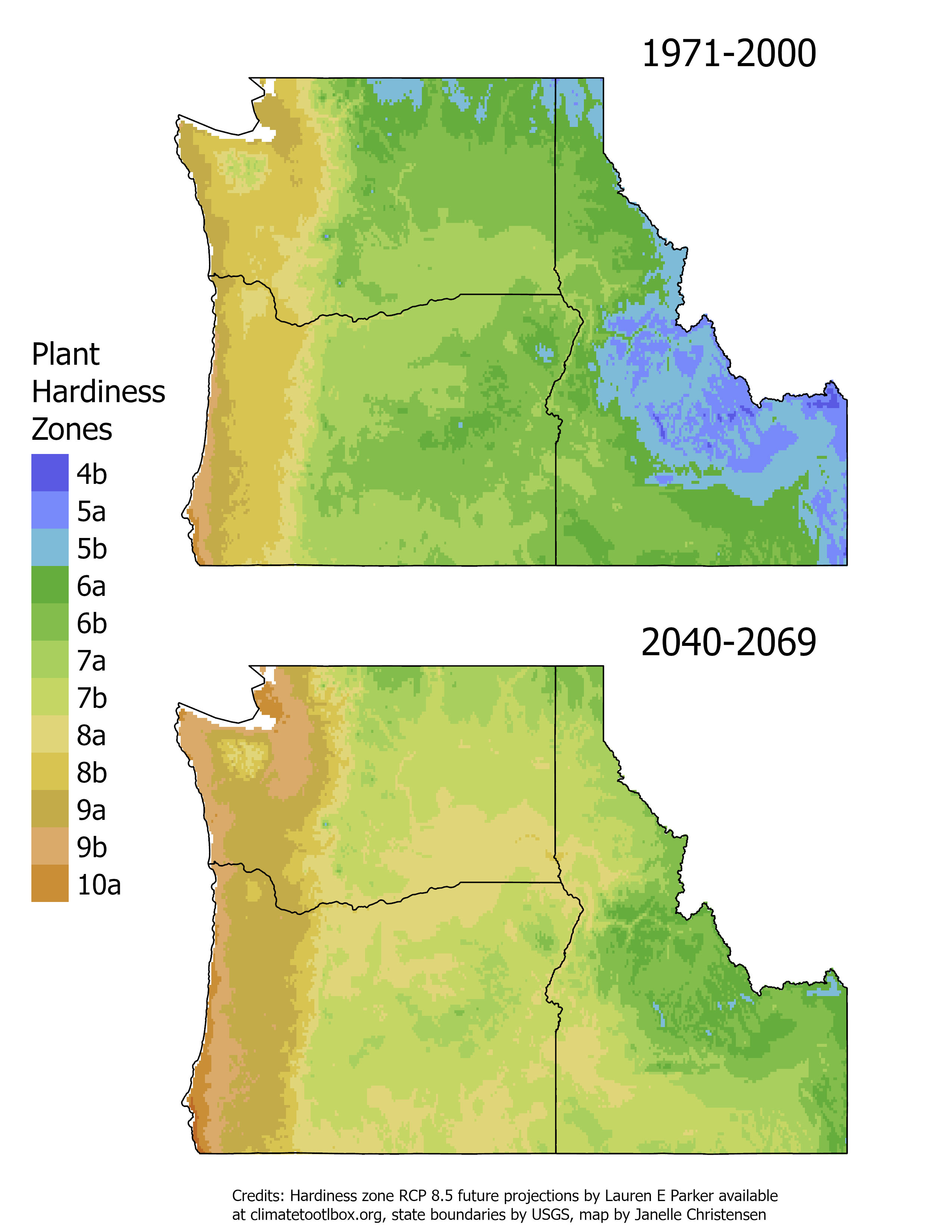
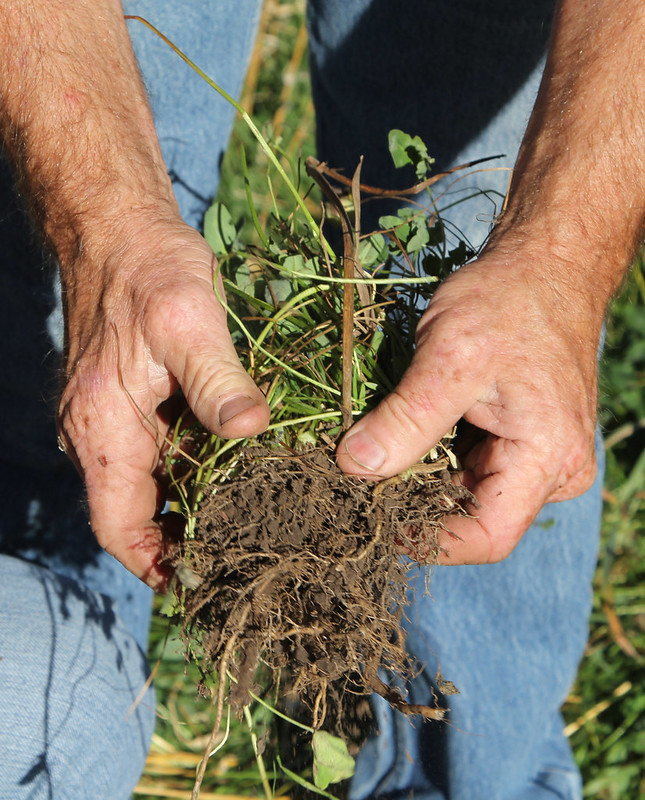
-
Management Actions for Northwest Agriculture
A suite of management actions that can assist agricultural producers in Alaska, Idaho, Oregon, and Washington adjust their operation to mitigate and adapt to…
-
Urban Agriculture and Climate Change in the Northwest
Robust urban agriculture systems in the Northwest can increase locally available foods and help urban areas adapt to climate change.


